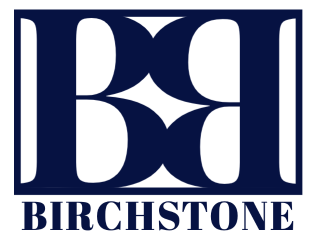The rental market has become a veritable goldmine, defying the challenges of an unaffordable housing market and a shortage of available homes. With soaring home prices and stagnant wage growth, more individuals, particularly the younger age groups, are turning to rentals for long-term housing solutions.
This escalating demand has created a strong and resilient rental market, offering cost-effective alternatives to homeownership. In this article, we will explore the reasons why investing in multifamily rentals presents an alluring opportunity for the future, examining the remarkable growth, affordability challenges, and the housing shortage that underpins this market's strength.
Key Takeaways
- Demand for rentals is high, with a significant increase in the number of renter households formed and renters across all age groups.
- Affordability issues, such as high home prices, have led many people to turn to rentals as a more affordable option to owning a home.
- There is a housing shortage in the US, with a significant deficit of homes, which drives the demand for rentals.
- The rental market offers a more feasible option for individuals with lower income growth and helps offset the impact of inflation and rising costs.
Why Invest in Multifamily Rentals?
Investing in multifamily rentals offers a favorable opportunity due to the strong demand for rentals, affordability issues in the housing market, the shortage of available homes, and the stagnant income growth in relation to rising home prices and inflation.
The rental market provides numerous benefits and investment potential. With the increasing number of renter households, there is a consistent demand for rental properties across all age groups. Additionally, high home prices and the inability to afford a home have led many individuals to turn to rentals as a more affordable option.
The housing shortage further drives the demand for rentals, as the construction industry struggles to keep up. Moreover, stagnant income growth in comparison to rising housing prices and inflation makes renting a more feasible option for those with limited resources.
Overall, investing in multifamily rentals presents an attractive opportunity with strong prospects for growth and returns.
Demand and Growth
The demand for rental properties has been steadily increasing, with a significant growth in the number of renter households formed in recent years, particularly among younger age groups. This trend is driven by various factors such as high home prices, affordability issues, and a housing shortage. The rental market offers a more affordable option for those who are priced out of the housing market and provides a solution to the increasing demand for housing. According to rental market trends, the future of the rental market looks promising, with a strong market that has been thriving for decades. Smart investors recognize the potential and are investing in multifamily rental properties, which provide healthy returns. Projections show that the rental market will continue to thrive, making it a lucrative opportunity for investors.
| Rental Market Trends | Rental Market Projections |
|---|---|
| Increasing demand for rentals | Strong market growth |
| Affordability issues in the housing market | Continued demand for rental properties |
| Housing shortage | Lucrative investment opportunity |
| Delayed homeownership among younger generations | Positive returns for investors |
| Stagnant wage growth and rising home prices | Promising future for the rental market |
Affordability Challenges
One of the major challenges faced in the multifamily rental industry is the issue of housing affordability. The rental market trends indicate that high home prices have increased the demand for rentals as many people are priced out of the housing market. Median home prices have risen by more than 34% in the last five years, while income growth has been significantly lower.
Additionally, inflation has impacted the affordability of housing and other expenses, with prices of goods and services increasing significantly. As a result, the rental market provides a more feasible option for those with lower income growth and offers an affordable alternative to offset rising costs. Renting is cheaper than owning with a mortgage in all 50 largest metropolitan areas in the U.S., with potential savings ranging from $300 to $1300 per month.
These factors contribute to the strong and bright future of the rental market.
Housing Shortage
The housing shortage in the U.S. has been exacerbated by factors such as labor shortages, increasing land prices, and supply chain disruptions. These challenges have contributed to a significant shortage of homes, with the U.S. currently short 5.24 million homes. This shortage has increased from 3.84 million in 2019.
The impact of the housing shortage on the rental market is substantial. With fewer homes available for purchase, many individuals and families are turning to rentals as an alternative. The high demand for rentals has further increased rental prices and competition among renters.
To address the housing shortage, solutions such as increasing construction efforts, incentivizing affordable housing development, and addressing supply chain issues need to be implemented. These measures can help alleviate the shortage and create more opportunities in the rental market.
Frequently Asked Questions
What are the tax implications of investing in multifamily rentals?
Investing in multifamily rentals has tax implications and offers financing options. Tax implications include depreciation deductions, mortgage interest deductions, and the potential for capital gains taxes. Financing options include traditional mortgages, commercial loans, and partnerships with other investors.
How can I finance the purchase of a multifamily rental property?
Financing options for purchasing a multifamily rental property include conventional loans, FHA loans, and commercial loans. The loan process involves pre-qualification, application, underwriting, appraisal, and closing. Various factors such as credit score, down payment, and property condition impact loan eligibility and terms.
What are the typical expenses associated with owning and managing a multifamily rental property?
Typical expenses associated with owning and managing a multifamily rental property include property maintenance costs for repairs and upkeep, tenant screening expenses for background checks, credit checks, and eviction proceedings, and property management fees if outsourcing management tasks.
Are there any regulations or legal considerations specific to investing in multifamily rentals?
Investing in multifamily rentals requires adherence to regulations and legal considerations. Landlord-tenant laws, fair housing regulations, zoning laws, and building codes are crucial to understand. Legal compliance ensures a smooth and successful investment experience.
How can I find and evaluate potential multifamily rental properties in a specific location?
To find and evaluate potential multifamily rental properties in a specific location, one can utilize various methods such as online listings, working with real estate agents, analyzing market data, conducting property inspections, and reviewing financial projections and rental history.

